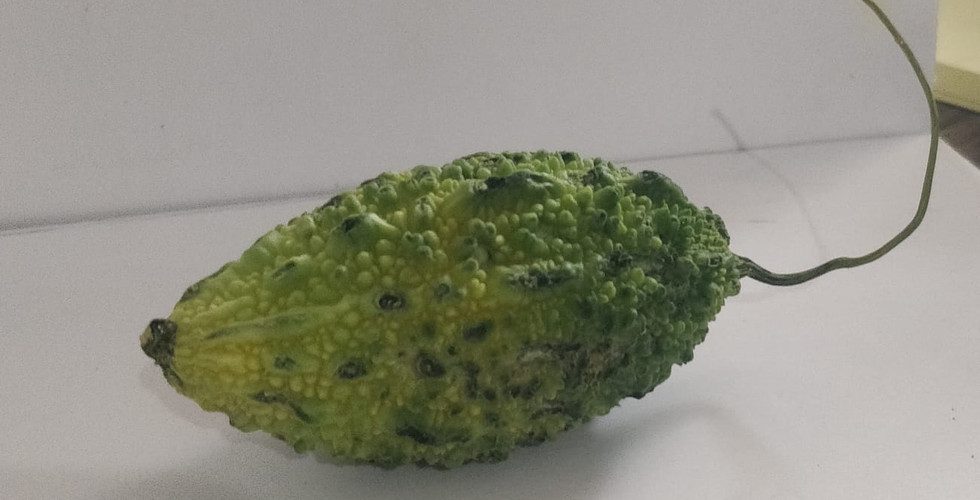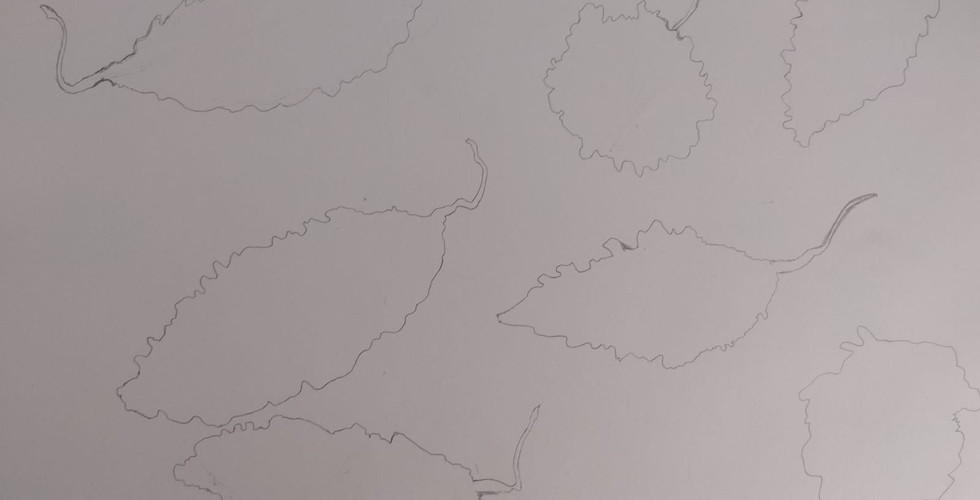LJL FVL-2
- Devyani Rathore
- Oct 30, 2021
- 3 min read
Updated: Oct 31, 2021
The aim of this project was to understand the form ,colour and the importance of media and techniques, it aimed towards increasing our sensitivity and skills of keen observation.
OBSERVATION & REPRESENTATION
Texture: While performing the tasks on the first day, I realised how important it is to feel and observe the texture of the object kept in front of you. Feeling and observing the texture that my vegetable had, helped me create volume and capture details that identifies the object because of the depressions, folds and elevation that it comprised of.
Variation of light: It is very important to observe the variation of light falling on your object. The application of colour depends on the amount of light falling on that particular area. The area which receives less amount of light is darker than the area which receives the most amount of light. Therefore, the application of colour will be more in the former and less in the latter respectively.There should be enough light source to observe its real form and colour.
VISUAL MEDIA

CONCLUSION
One of the strengths that I discovered during this project was my potential to work with watercolours.
It had been a while since I had been accustomed to this medium but I could never get the desired outcome. However, the step by step approach of each and every activity and starting from the very basic level helped me improve on my ability to work with this medium by the end of this project.
Understanding the role of sensory experience in perception, characteristics and use of watercolour, observing and identifying the fundamental visual elements of the form through the activities that we performed each day helped me carefully observe my object and paint it with watercolour.
I struggled the most while making the line drawing of the bitter gourd as the bitter gourd had a lot of lines in it and it was very time consuming to observe and draw each and every line.
Later, I realised that I had to draw a very basic line drawing just to bring the minimalistic character of that vegetable, which saved my time.
KEY LEARNINGS
One of the major key learnings that I have gathered during this project is that it is very essential to first identify the very basic or the minimalistic characteristics of any object before moving on to the next step or entering into complexities.
This is because if the basics that you form are strong then there is no lack of confidence while working and strengthening these helped me directly use any medium on the paper without any preliminary tracing.
One of the aspects of this project delivery that helped me the most in each and every task were the short films that we watched before commencing the activity each day.
Each and every film was connected to the activity of the day which gave me an idea about how to go about a particular task.
Not only did it it give me the basic idea about the activity but also an overall understanding about how colour is used differently in different representations. For eg: in "9 minutes to Hussain", there was a difference of tone in the colour in different places i.e different tone of colour was used by the artist in London and a different one in India based upon the atmosphere a place had.
Colours evoke a specific emotion in each individual and therefore his usage of colours varied in various seasons. For eg: He used black to represent winters and one could see a touch of red in most of his paintings.
I also learnt about how each and every artist has their own language of communication which makes each painting unique in it's own way. For eg: in the short film "Ganesh Pyne", the artist had his own language of communication where the light in his paintings symbolised darkness because of the traditional meaning of the symbols that the Pynes held in their culture.

















Comments